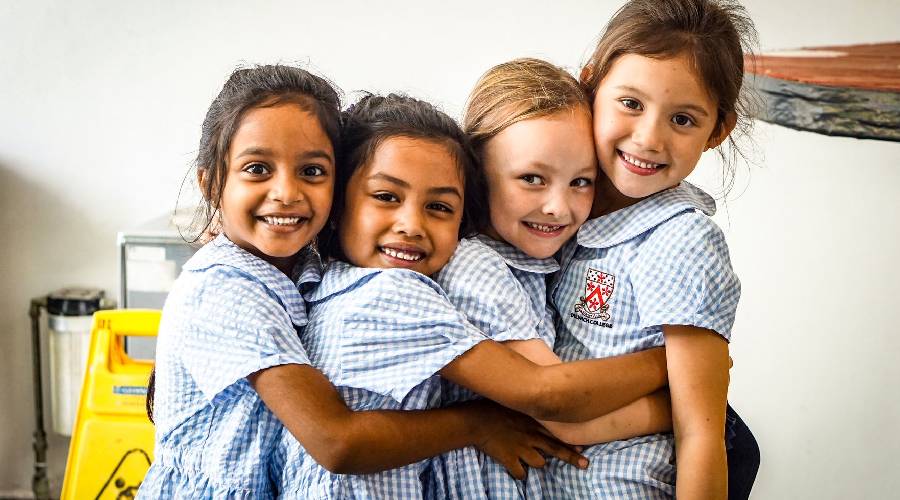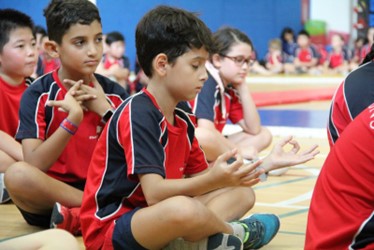Student Wellbeing Is Just as Important as Academic Achievement

As a society, we are beginning to take our mental and emotional wellbeing more seriously than we have done in recent years, both as individuals and collectively, and education plays as important role in this.
It is clear that the pressures of the modern world are weighing heavily on the young shoulders of students. Education is so much more than just learning academic subjects and seeking academic success. It’s also about building safe, inclusive and connected school communities that promote wellbeing and learning. Wellbeing initiatives are now essential rather than an optional aspect of any curriculum.
What does wellbeing mean?
In the international context, the main aim is to provide a better understanding of how physical and mental wellbeing can be achieved and impacts on educational outcomes, teaching and learning.
What measures can be taken to support student wellbeing?
For the purpose of these key questions, we have defined the essential measures of student wellbeing as follows:
- Managing stress
- Providing opportunities for students to work productively in challenging situations
- Sustaining and maintaining well-being in students
- Engaging in activities that enable students to think for themselves
- Building mental resilience
- Providing students with a sense of belonging
- Help students to deal with and cope with difficult or stressful situations
- Enabling students to communicate effectively
International schools in Singapore are placing students’ wellbeing on an equal footing with their academic achievement in order to ease the pressure of exam performance, the negative consequences of social media and most recenlty, the negative effects of home learning since the wake of the pandemic. Wellbeing initiatives run through classrooms to promote students’ happiness. There has been a huge increase in pastoral leaders, wellbeing programmes, school events and promoting emotional health.

Here are some of the impressive initiatives introduced at International Schools in Singapore: Tanglin Trust School has developed its own version of the UK’s Personal, Social, and Health and Economic (PSHE) education – called the Lifeskills curriculum. Australian International School, Stamford American International School, Brighton College (Singapore) switch to focus on student wellbeing every year for a day. The three campuses join more than 70 other Cognita-owned schools to celebrate the group’s Global Be Well Day, to improve young people’s mental health and wellbeing. Dulwich College (Singapore), has partnered with MIT to introduce the Compassionate Systems Framework. Middleton International School offers the US-based Contentment Curriculum, which focuses on Four Pillars of Wellbeing. UWCSEA’s commitment to developing a culture of care and wellbeing includes ensuring students are provided with a network of trusted professionals and range of programmes, supporting their social – emotional development.
Facilitating student well-being: relationships do matter

As we find ourselves navigating a world changed significantly by the pandemic, wellbeing and compassionate action have swelled in importance and become ever more significant in our lives and our hopes for the future.
At Dulwich College (Singapore) we are working to transform the support of student and staff well-being, through our implementation of the Compassionate Systems Framework. This framework is an educational reform project led by researchers from the Massachusetts Institute of Technology (M.I.T) in Boston and our Deputy Head of College, Jacob Martin.
The Compassionate Systems Framework offers an approach to teaching and learning which looks to support the wellbeing, physical and mental health of our students. We aim to give students deep thinking skills which will serve them well in their lives and allow them to make healthy and impactful decisions as adults.
The framework combines two key components, the first, a series of ‘’systems thinking tools’’ which can be used in any curriculum context and help students understand the deep interconnectedness of the complex issues we discuss in the classroom. These tools also structure their learning and encourage a conceptual understanding of the issue(s) being studied. These can then be used to further explore complex issues like personal wellbeing or mental health issues or more Global issues like the UNSDGs which are the focus of many areas of our curriculum.
The second component is a set of practices and approaches which work to develop emotional literacy with the students. Students gain a deep understanding of themselves and their emotional landscape as well as some of the World’s most challenging issues. At the same time, they gain the compassion and empathy to appreciate the human connectedness in these issues whilst also not becoming overwhelmed by the challenges they bring psychologically and emotionally.

Some examples of how we do this.
One example of this framework and approach is the ‘’check-in’’. It is a simple tool in some ways, but it has the power to transform students’ wellbeing and create a more cohesive, supportive, and compassionate culture around our school and in our classrooms.
A daily check-in provides students with the opportunity to reflect and connect with their emotional state. It encourages them to talk about their feelings in a safe, structured space and normalises discussion around mental health. It also allows the teachers to understand their students better and for these discussions to become part of our daily routine.
A visual check in can be used where students/people put their name/picture on an emotion.
This is step one and is only successful if this action is followed by a discussion. During the discussion, only one person can speak at a time, and they must not be interrupted. The listener is a not a passive role. They should be actively listening and deciding how to respond appropriately and with compassion.

You can also ‘’check-in’’ with yourself.
A journal check-in is when a person writes down how they are feeling. This is not for the intention of anyone else to see, unless they wish. They may answer questions such as, ‘How are you feeling this morning?’ ‘What are your aspirations for the day?’. This allows people to become more self-aware of their emotions. We also use the small group check-in where a group of 2-4 share how they are feeling. It must be established as a safe and confidential space at the beginning. People can choose whether to share or not. The final example is the Whole group check-in where everyone in the group shares how they are feeling. This often follows an individual check-in.
Learn more about: Wellbeing | Singapore (dulwich.org)
Remember that it’s your child who will spend seven years at primary school, not you. If the school has the right mix of factors that you think your child will enjoy then they will most likely have a happy, fulfilling and educational time at primary school.

